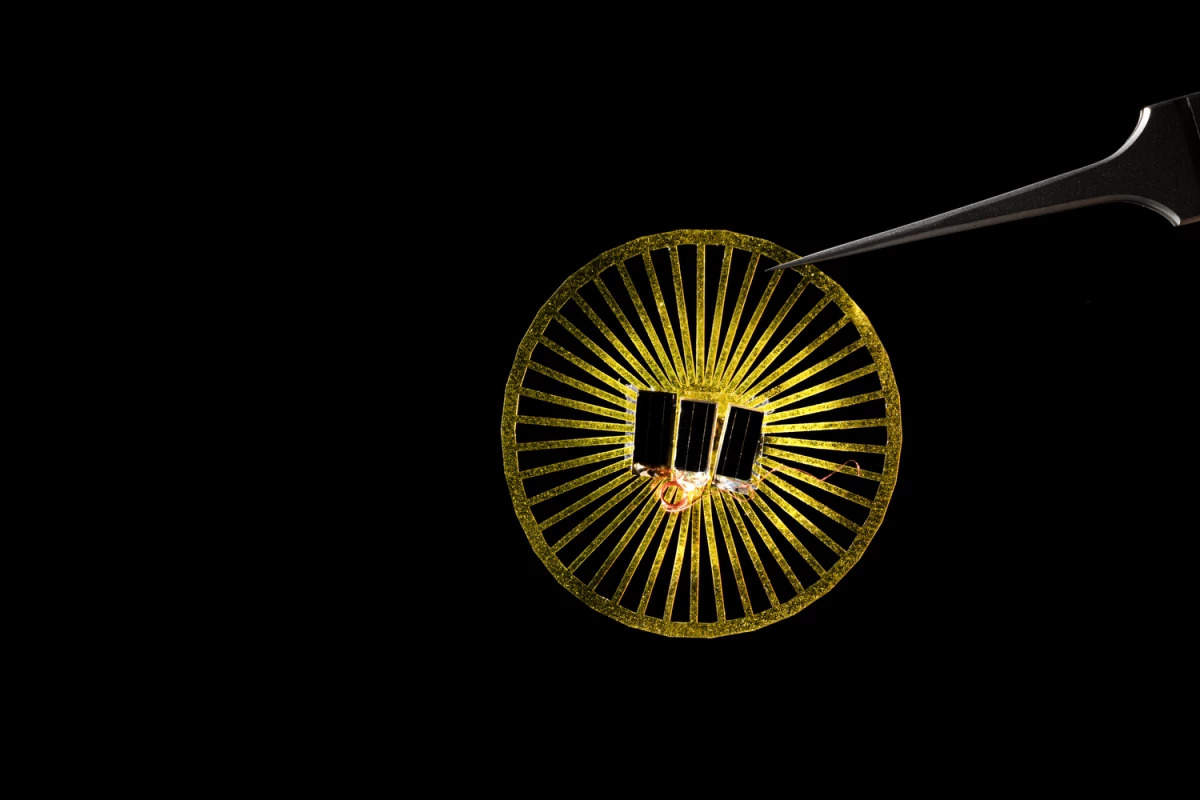
Novel sensors developed at the University of Washington use solar panels (black rectangles) instead of batteries for power. Mark Stone/University of Washington
–
While sensors of this nature have some exciting potential, deploying them across large areas would currently involve a lot of meticulous and time-consuming manual work to place the individual sensors. We’ve actually seen drones leveraged to simplify this type of work before, dropping sensors onto the ground or even shooting them like darts.
Scientists at the University of Washington have come up with an even more efficient way of doing things, and it starts with a carefully thought out design inspired by the way dandelions distribute their seeds with the wind. The team worked its way through 75 designs modeled on these seeds before landing on the final one, which still required a few tweaks.
“The way dandelion seed structures work is that they have a central point and these little bristles sticking out to slow down their fall,” said study author Vikram Iyer. “We took a 2D projection of that to create the base design for our structures. As we added weight, our bristles started to bend inwards. We added a ring structure to make it more stiff and take up more area to help slow it down.”
Heavy batteries were eschewed in favor of tiny solar panels to power the onboard electronics, which include a capacitor to store a charge after the sun goes down and get the sensor started up again the next morning. While the battery-free design keeps the platform light, it is still around 30 times heavier than a one-milligram dandelion seed. The team’s experiments showed that it is light enough, however, to travel the length of a football field in a moderate breeze after being dropped by a drone.
“We show that you can use off-the-shelf components to create tiny things,” said senior author Shyam Gollakota. “Our prototype suggests that you could use a drone to release thousands of these devices in a single drop. They’ll all be carried by the wind a little differently, and basically you can create a 1,000-device network with this one drop. This is amazing and transformational for the field of deploying sensors, because right now it could take months to manually deploy this many sensors.”
On the ground, each of the team’s tiny platforms can host up to four sensors, measuring temperature, light, humidity and pressure, and relay the data from up to 60 m (200 ft) away. The design sees them land with solar panels facing upright 95 percent of the time, and the researchers found that varying their shapes ever so slightly changed the way they moved in the wind, ensuring they spread out to different spots.
“This is mimicking biology, where variation is actually a feature, rather than a bug,” said co-author Thomas Daniel. “Plants can’t guarantee that where they grew up this year is going to be good next year, so they have some seeds that can travel farther away to hedge their bets.”
The scientists already have some ideas about how to improve on this initial design, with working towards biodegradable versions to avoid the issue of scattering electronic waste among the considerations.
“This is just the first step, which is why it’s so exciting,” Iyer said. “There are so many other directions we can take now such as developing larger-scale deployments, creating devices that can change shape as they fall, or even adding some more mobility so that the devices can move around once they are on the ground to get closer to an area we’re curious about.”
The research was published in the journal Nature, while the video below offers an overview of the technology.
–
Source: University of Washington
–
–






















